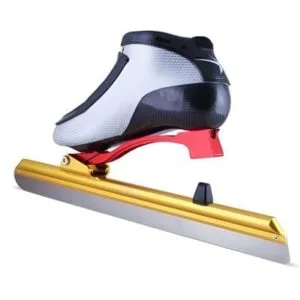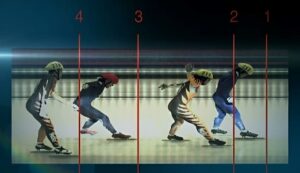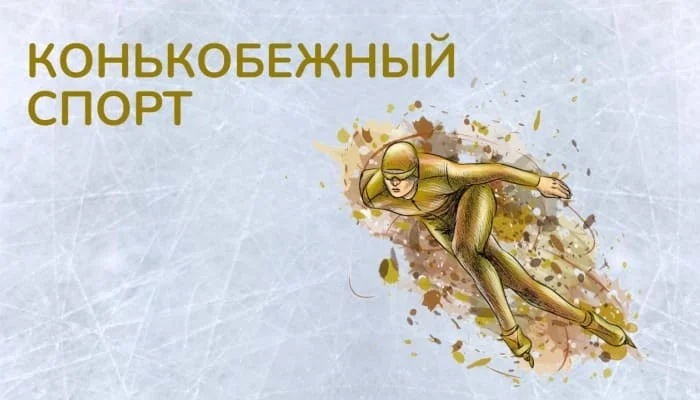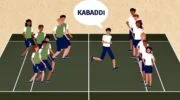In the article “Speed skating” we will tell you about speed skating. You will learn a brief history and the techniques used in this sport.
#SpeedSkating #AboutSkating #Sports #WinterSport
Speed skating appeared much earlier than one might imagine. Initially, skates were used by people to move more efficiently across frozen bodies of water and to deliver mail. Over time, skating turned into a fun pastime, allowing you to show your skills to the people around you.
Skating first appeared in Finland nearly 4,000 years ago, but it was Holland who turned this mode of transport into a sport in 1200. In the land of tulips, resourceful inventors learned how to make sharp blades out of iron and cast artificial rinks.

The Netherlands, as the birthplace of speed skating, first held international competitions, but they were organized at the end of the 19th century. Dutch, Russian, American and English teams took part in the first competitions. Our compatriot Alexander Panshin became the first world champion in these competitions.
Speed skating was included in the Olympic program back in 1916, but because of the First World War the first competitions were held only in 1924 in France. Driven by the introduction of the program were the last games in 1908, where the competition in figure skating became a bright and unforgettable event.
At the Olympics of the 24th, only men could compete in speed skating. Women could demonstrate their skills eight years later at the exhibition performances in ’32, but it was not until 1960 that they were included in the program of the Games.
Lydia Pavlovna Skoblikova came to her first Games in 1960. After winning two gold medals in the 1500 and 3000 m, Lydia didn’t rest on her laurels, and at the next Games in 1964 she decided not to be petty and took all the gold (500, 1000, 1500 and 3000 m).

Lydia Pavlovna is the greatest skater with unique achievements. In 1964, not only were there the Olympics, but also the World Speed Skating Championships in Sweden. Skoblikova won four golds there as well, receiving the unofficial title of “Queen of Skates”.
In those years, Lidia was not the only Russian athlete in speed skating who brought gold to the team. Evgeny Romanovich Grishin shined for the men, winning 4 Olympic gold medals in the 500 and 1,500 meters in 1956 and 1960.
At the moment, we have lost a bit of our position in the sport of speed skating. At the 2022 Games, our team has only Angelina Golikova’s bronze medal in speed skating, but there are two crucial medals in short track speed skating.
Skaters compete at distances from 500 to 10,000 meters on special ice rinks with a lap length of 400 meters. On a track of two parallel tracks, the athlete runs a race in pairs with an opponent, alternating tracks after each lap.

Skating fans know that the skates used by athletes in the race are not like those used in hockey or figure skating. Claps or “clap” skates were introduced by the Dutch in 1996 and have a longer and thinner blade.

Presented skates were a real revolution in the sport. Due to the movable blade, the athlete has an average of 15 cm longer push, which allows for greater speed. In previous models, a skater pushed off only with the toe of the blade, and this restrained the movement of his foot, not allowing the muscles to work to their full potential.
During the race, a boot that is made according to an individual mold of the athlete’s foot helps keep the foot from injury. The basis of a professional boot is carbon, a durable and lightweight material, while the upper is made of soft calfskin.
Today, the skate overalls are not just clothes, but a powerful frame, which allows not only to reduce the aerodynamic resistance, but also to support the athlete’s body in a particular position, and thus partially relieve the muscles.

The suit is made of regular lycra, which is then coated with polyurethane. The suit also has an anti-friction fabric sewn into it, which allows athletes to reduce the effect of rubbing the feet to a minimum. The suit is sewn strictly to the individual size of each athlete.
The winner and loser in speed skating are sometimes separated by fractions of a second, so the human eye is the weak link in such a struggle. That is why the latest refereeing technologies came into the sport.
The first assistant to the referee is the starting gun. The sporting gun is designed so that the moment the trigger is pulled, a radio signal is transmitted to the main refereeing computer. At the finish line there is a chronometer waiting for the skaters. These devices do not work autonomously either. The stopwatch sends a signal to the race judge’s box instantaneously.
The final element of this complex system is a photo finish line. In spite of its name, the photo finish has no photo cells, but there is a special digital camera with a narrow and vertical matrix, which allows taking pictures right at the finish line.
The shooting speed is also significantly different. Whereas a regular camera shoots 24 to 30 frames per second, a photofinish camera shoots between 100 and 10,000. A special program then stitches the image into a single whole with a breakdown into time segments. This makes it possible to determine the personal time of each athlete who crossed the finish line.

The speed that the athlete develops on the ice exceeds 60 km/hour. Such results cannot be achieved without “fast ice” which is how professionals call high-quality ice on which records can be set.
What is fast ice and how does it differ from other winter sports? Firstly, ice for skaters should be as slippery as possible, i.e., it should have a minimum coefficient of friction. The less friction, the higher the speed. Second, the ice must be very hard. Hardness of ice is achieved due to its small thickness, not more than 3 cm, but for figure skaters and hockey players the thickness is not less than 7 cm.
Technology of ice arena filling for skating is a complex and multistage process. Over the course of a week, water is poured onto the surface of the rink layer by layer. Each layer is not thicker than 1 mm, and this is how the high strength of the ice massif is achieved.

And finally, the most important stage, the creation of the top layer – the speed film, which is achieved by adding surfactants to water, these chemicals are included in almost all detergents.
No matter how fast the ice is made, victories in skating are achieved mainly through hard training. Put a child on skates can be 3 years, but to enroll in the section can be 9 years old.
The future skater to go through several stages of athletic development before he can boast of Olympic gold. Athletic stages last from 3 to 5 years, and at the stage of higher sports skills and not limited in time.
Skating will help to develop movement coordination, agility and balance. In addition, your child will be able to think quickly and outside the box, learn to take responsibility for the result. Not superfluous will be a good mood, as during training increased production of endorphins.
About skating
FAQs
What is speed skating?
Speed skating is the speed skating on a closed 400-meter long ice track. On an ice arena of two parallel tracks, the athlete runs in pairs with an opponent, alternating tracks after each lap.
Who is the most titled speed skater?
- Irene Wüst (Netherlands) - 13 Olympic medals, 6 of them gold;
- Lidia Skoblikova (Russia) - 6 Olympic medals, all 6 gold;
- Claudia Pechstein (Germany) - 9 Olympic medals, 5 of them gold;
- Klas Tunberg (Finland) - 7 Olympic medals, 5 of them gold;
- Bonnie Blair (USA) - 6 Olympic medals, 5 of them gold.
What are the distances in speed skating?
- 500 meters;
- 1,000 meters;
- 1,500 meters;
- 3,000 meters;
- 10,000 meters;
- Team race (6 laps);
- Team sprint;
- Sprint Combined Events;
- Small all-around;
- Classical all-around;
- Skating marathon (amateur competitions).
What is the maximum speed of skaters?
The world record in speed skating belongs to three-time Olympic champion Kjeld Nøys. He was able to reach a speed of 93 km/hour. The average speed of the best skaters on the planet is between 50 and 55 km/hour.









